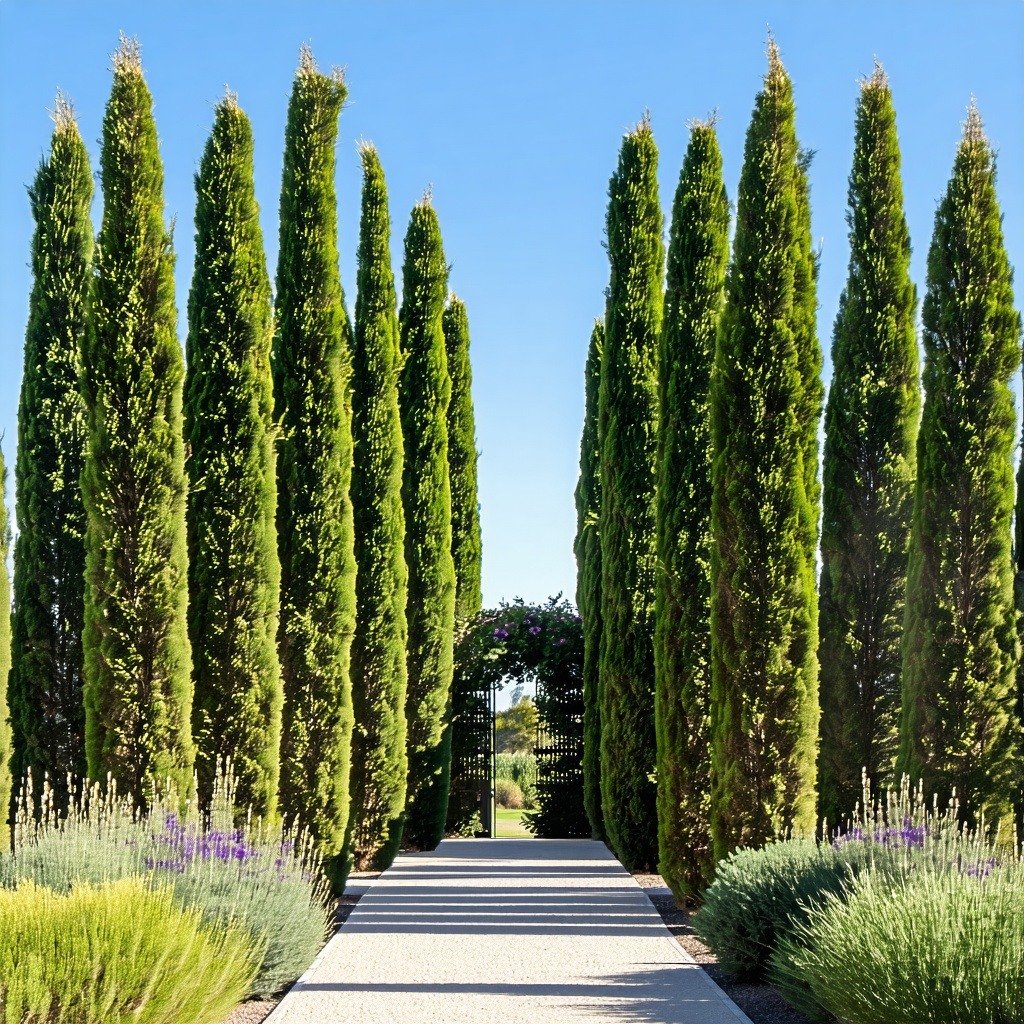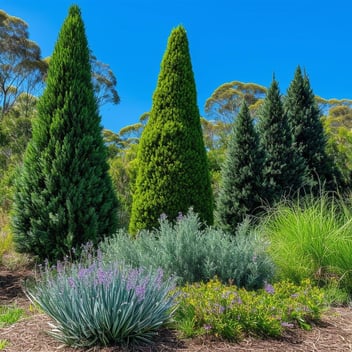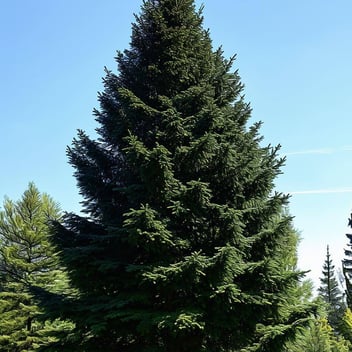Using Conifers to Create Structure in SEQ Garden Designs
Introduction
In the lush landscapes of South East Queensland (SEQ), garden design transcends mere aesthetics, embodying a harmonious blend of form and function. Central to achieving this equilibrium is the establishment of structure within the garden—a framework that guides the eye, delineates spaces, and imparts a sense of order. Conifers, with their diverse forms and enduring presence, emerge as quintessential elements in crafting such architectural coherence.
Understanding Conifers
Definition and Characteristics
Conifers are predominantly evergreen trees and shrubs characterized by needle-like or scale-like foliage and seed-bearing cones. Their morphological diversity encompasses towering specimens to diminutive groundcovers, each contributing uniquely to garden compositions. Their adaptability to various climates and soil conditions further enhances their appeal in landscape design.
Adaptability to SEQ's Climate
SEQ's subtropical climate, marked by warm, humid summers and mild, dry winters, presents both opportunities and challenges for plant selection. Many conifer species exhibit resilience to these conditions, particularly those with drought-tolerant attributes, making them suitable candidates for SEQ gardens. Their ability to withstand periods of low rainfall aligns with sustainable landscaping practices in the region.
Benefits of Using Conifers for Structure
Year-Round Visual Interest
The evergreen nature of conifers ensures continuous visual appeal throughout the seasons. Their persistent foliage provides a stable backdrop against which seasonal plants can flourish, maintaining garden interest even during dormant periods.
Variety in Form and Texture
Conifers offer an extensive palette of shapes—ranging from columnar and pyramidal to prostrate and weeping forms. This morphological variety allows designers to introduce contrasting textures and silhouettes, enriching the garden's spatial dynamics.
Low Maintenance Requirements
Once established, many conifers require minimal intervention, owing to their inherent hardiness and pest resistance. This attribute makes them practical choices for gardeners seeking enduring structure without intensive upkeep.
Selecting Suitable Conifer Species for SEQ Gardens
Cupressus sempervirens (Italian Cypress)
Columnar Form and Vertical Emphasis
The Italian Cypress is renowned for its slender, upright habit, reaching heights of up to 12 meters with a narrow spread. This verticality introduces a sense of grandeur and formality, ideal for framing entrances or punctuating garden vistas. Its tolerance to drought and adaptability to SEQ's climate further enhance its suitability.
Juniperus chinensis 'Spartan'
Versatility and Dense Foliage
'Spartan' is a cultivar celebrated for its robust, conical form and rich green foliage. Attaining heights of approximately 5 meters, it serves effectively as a privacy screen, windbreak, or standalone specimen. Its resilience to varying soil types and climatic conditions underscores its versatility in SEQ gardens.
Callitris columellaris (Bribie Island Pine)
Native Resilience and Adaptability
Endemic to Queensland, the Bribie Island Pine embodies native adaptability and ecological harmony. Reaching heights between 10 to 20 meters, it features a graceful, pyramidal form with fine-textured foliage. Its innate drought tolerance and compatibility with local fauna make it a valuable addition to sustainable garden designs.
Design Strategies Incorporating Conifers
Creating Focal Points
Strategically placing conifers with distinctive forms or colors can anchor the garden's design, drawing attention and providing visual anchors. For instance, a solitary Italian Cypress can serve as a striking focal point in a minimalist landscape.
Establishing Natural Screens and Hedges
Utilizing conifers like 'Spartan' Juniper in linear plantings can create effective privacy screens or windbreaks. Their dense foliage and uniform growth habits ensure functional and aesthetic barriers that delineate spaces without the need for constructed fences.
Complementing Other Plantings
Conifers' varied textures and forms allow them to harmonize with a broad spectrum of plantings. Pairing them with flowering perennials or ornamental grasses can result in dynamic compositions that evolve throughout the seasons.
Planting and Maintenance Considerations
Site Selection and Soil Preparation
Selecting an appropriate site is paramount for the successful establishment of conifers in South East Queensland (SEQ) gardens. Conifers generally thrive in well-drained soils and full sun to partial shade. Prior to planting, assess the soil's drainage capacity; if the soil is poorly draining, consider planting the conifer in a slightly raised position and mounding better-draining soil around it. This technique enhances root aeration and prevents waterlogging, which can be detrimental to conifer health.
Watering Practices and Mulching
Establishing a consistent watering regimen is crucial, especially during the initial growth phase. Deep, infrequent watering encourages robust root development, enhancing drought resilience. Applying a layer of organic mulch around the base of the conifer aids in moisture retention, regulates soil temperature, and suppresses weed competition. Ensure the mulch is kept a few centimeters away from the trunk to prevent rot and pest infestations.
Pruning Techniques for Desired Shapes
Pruning conifers requires a delicate approach, as they do not regrow from old wood. Light trimming to remove dead or damaged branches can be done as needed. For shaping, prune during the growing season, but avoid cutting back into leafless areas, as this can result in bare patches that may not regenerate. Regular inspections for signs of pests or disease ensure early detection and management. Employing organic treatments and encouraging beneficial insects fosters a balanced ecosystem, reducing reliance on chemical interventions.
Case Studies: Successful Integration of Conifers in SEQ Gardens
Residential Garden in Brisbane
In a suburban Brisbane garden, the strategic placement of Italian Cypress (Cupressus sempervirens) has been employed to create vertical structure and privacy. The slender, columnar form of the cypress trees flanks the entrance pathway, guiding visitors' perspectives and imparting a sense of grandeur. Their evergreen foliage ensures year-round appeal, seamlessly integrating with the garden's Mediterranean-inspired design.
Public Park in Gold Coast
A public park in the Gold Coast region showcases the use of native Bribie Island Pine (Callitris columellaris) to establish natural screens and windbreaks. Planted in clusters, these conifers provide shelter from coastal winds while enhancing the park's biodiversity. Their adaptability to sandy soils and resistance to salt spray make them ideal for coastal landscapes, demonstrating the functional and aesthetic benefits of incorporating native conifer species.
Conclusion
Integrating conifers into South East Queensland garden designs offers a multifaceted approach to establishing structure, enhancing visual interest, and promoting sustainability. By selecting species attuned to the local climate and employing thoughtful planting and maintenance practices, gardeners can create resilient landscapes that flourish amidst SEQ's unique environmental conditions. Whether serving as focal points, natural screens, or complementary plantings, conifers provide enduring beauty and functionality, enriching the tapestry of SEQ gardens.




